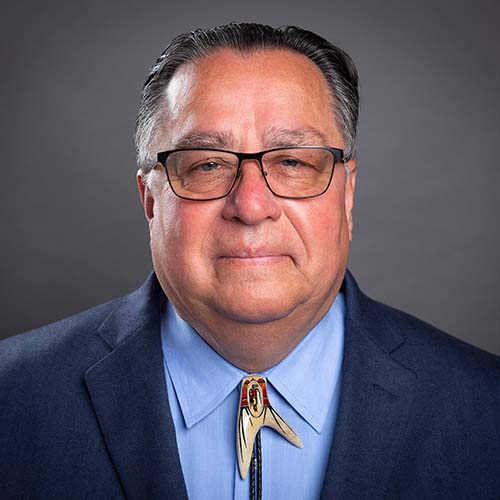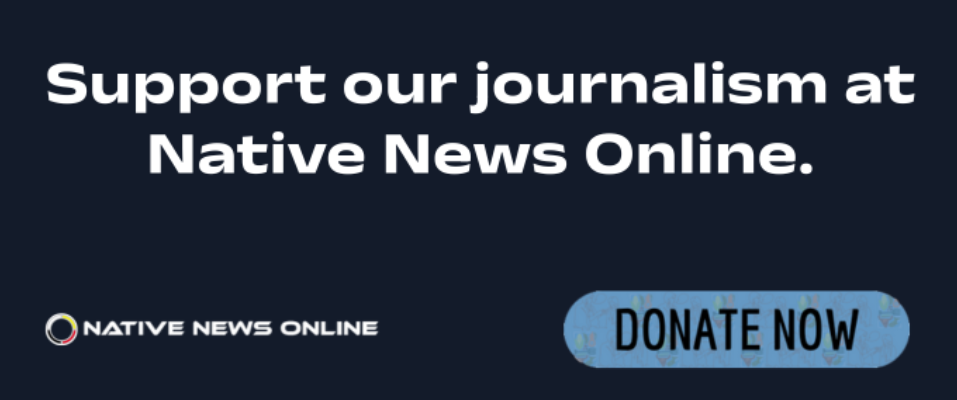
- Details
- By Zuni Youth Enrichment Project
ZUNI, NM — Last month, eight young adults from Zuni Pueblo had the opportunity to connect with Zuni culture, history and sacred sites at Grand Canyon National Park, Walnut Canyon National Monument and Wuptaki National Monument with the Zuni Youth Enrichment Project. The young people, ages 16 to 24, traveled to Arizona on Tuesday, March 18 and returned to Zuni on Friday, March 21.
ZYEP Youth Development Coordinator Kiara “Kiki” Zunie, Built Environment Leader Enric Tsalate and Operations Manager Josh Kudrna led this unique spring break trip, which was made possible through the nonprofit organization’s ongoing relationship with Grand Canyon National Park. Tsalate, who previously served as ZYEP’s built environment coordinator and recently returned to the youth project, also served as the team’s cultural knowledge sharer.
“Grand Canyon is a sacred place, as it is the place of emergence for the A:shiwi (Zuni) people,” Kudrna said. “At every culturally significant and ancestral site we visited, Enric shared what he knew about them and how they connect to Zuni culture and the history of ancient migrations. He also led the moments where offerings were given and where prayers were appropriate.”
From his perspective, Tsalate said this year’s trip felt especially important and significant. He described a positive sense of urgency to connect Zuni youth with their ancestral homelands.
“It was a privilege to attend and be able to pass on knowledge that has been shared with me,” Tsalate reflected. “I’ve gotten to be the cultural advisor for several trips now, and I try to present a healthy blend of our traditional Zuni perspectives with modern archaeological ones so we can better understand how we engage with the world today while remaining connected with our history.”
On Tuesday, the group drove from Zuni to Walnut Canyon National Monument in north-central Arizona, where they walked the 1-mile Island Trail. Along the loop, they investigated the 25 accessible cliff dwellings and learned about this significant ancestral site for the Zuni people.
“One reassuring moment at Walnut Canyon was when we finished presenting our offerings to the ancestors, and it began to snow while the sun was still shining,” Tsalate said. “In Zuni, all forms of moisture are good signs, so I took this to be a message that we were on the right path.”
Next, the group drove to Grand Canyon National Park, where they set up camp at Mathers Campground. This would be home base for the duration of the trip.
“It was a very cold first day, so we were focused on setting up our campsite well before dark, building a fire and getting everyone warm and fed,” Kudrna said.
While ZYEP has led trips to the Grand Canyon in the past, he noted that this was the first time the group remained on the rim versus backpacking to the canyon floor.
“We haven’t spent much time getting to see the more public side of Grand Canyon National Park, so this time, we wanted to learn more about what is available and significant along the South Rim compared to what we typically experience on our backpacking trips down to the Colorado River,” he explained. “This also was a chance to get young people to Grand Canyon who might not have wanted to sign up for the more physically demanding trips that we have done in the past.”
On Wednesday, the group visited the Grand Canyon Visitor Center in Grand Canyon Village and enjoyed viewing the canyon from nearby overlooks. They also walked the paved rim path to the Yavapai Geological Museum.
“After lunch, we spent the afternoon riding the red-line bus route toward Hermit’s Rest, which is at the western edge of the South Rim developed area,” Kudrna said. “Then we returned to camp, where we got warm by the fire, shared an evening meal and spent time getting to know each other better.”
On Thursday, the group met with National Park Service staff at 10 a.m. at the iconic Desert View Watchtower, which is located at the east end of the developed South Rim. There, they spent several hours with Tribal Programs Coordinator Kelkiyana Yazzie and Jason Nez, a fire archaeologist who works with Grand Canyon National Park’s Science and Resource Management and Fire and Aviation Management divisions to protect important natural and cultural resources.
The NPS team also included two Grand Canyon Trust interns, Meranden Numkena and Lakin Epaloose, a Zuni artist who has been both a participant and an instructor in ZYEP’s art apprenticeship program. Together, the NPS staff shared information about their programs, the many ways these programs work with different affiliated tribes, and how young adults can get involved through internship and employment opportunities.
“As with all of our trips, we want to get young people outside and encourage them to take advantage of these opportunities on their own,” Kudrna. “A vital part of that is connecting with the National Park Service to show our young adults the different paths to NPS careers and how they can help protect places that are sacred to their community.”
Nez took the ZYEP group to various ancestral sites within the park, including an ancestral village and an area with pictograph panels. He explained how archaeology is applied to identifying, understanding and protecting cultural sites, and he discussed the importance of good wildfire management practices.
“I really appreciated the NPS staff who guided us,” Tsalate said. “It was motivating to hear why we need to be involved with the care and stewardship of public lands. The youth are the next leaders to fill these roles in advocacy and responsibility. The NPS messages felt powerful, especially right now. I think it really hit home for everyone on the trip.”
It was a lot to process, Kudrna agreed. By the end of that full day, the whole group had bonded through their shared experiences.
“Dinner and campfire time that night was when the group really seemed to come together,” Kudrna recalled. “They didn’t want the day to end, even when our firewood ran out! Aside from just hanging out together and joking around, we talked about our reflections — what we learned, what we enjoyed most, and what they were looking forward to sharing with their families.”
“We talked a lot about preservation and continuity,” Tsalate added. “We are continuing these traditions, beliefs and practices, and we are still connected to them. So, we focused on the strengths of our culture because we want our youth to feel a sense of belonging rather than feeling like they need to save their entire identity.
“The young people on our trip were facing hardships in their lives and were feeling disconnected from our culture,” he continued. “These types of programs help open the door for youth to develop healthy coping methods and reconnect with what it means to be Zuni.”
After breaking camp on Friday, the ZYEP group drove to Wuptaki National Monument near Flagstaff, Arizona. Another important ancestral site, the monument incorporates the remains of multiple villages that once were occupied by the ancient Pueblo people.
“We took our time visiting this area since it has unique features, like the northernmost ballcourt,” Kudrna said. “That is more commonly seen in cultural sites much further south, toward Mexico. The national monument also has an area where the Earth ‘breathes’ through geological vent formations that create airflows people can feel.
“Our visits to the other significant sites around the Flagstaff region helped show our young people the history of connections that existed across different established villages that are still spoken about today,” he continued. “These visits allowed them to put faces to names, so to speak, and connect even more deeply to the places described in the tribe’s oral history.”
Tsalate also reiterated that culturally significant experiences in places like Grand Canyon National Park, Walnut Canyon National Monument and Wuptaki National Monument can have a transformative impact on Zuni youth.
“My first time to Grand Canyon was when I was 24 years old,” he explained. “I’m 30 now, and I’ve been to Grand Canyon eight times. There was a spark ignited within me when I got to actually experience the things I was told stories about. That’s where my passion has developed, and it informs how I try to guide my work now.
“I appreciate organizations that do similar, powerful work like the Grand Canyon Trust and Ancestral Lands,” he continued. “These opportunities really plant the seed in our kids for career development and values that will shape a healthy and whole life.”
Help us defend tribal sovereignty.
At Native News Online, our mission is rooted in telling the stories that strengthen sovereignty and uplift Indigenous voices — not just at year’s end, but every single day.
Because of your generosity last year, we were able to keep our reporters on the ground in tribal communities, at national gatherings and in the halls of Congress — covering the issues that matter most to Indian Country: sovereignty, culture, education, health and economic opportunity.
That support sustained us through a tough year in 2025. Now, as we look to the year ahead, we need your help right now to ensure warrior journalism remains strong — reporting that defends tribal sovereignty, amplifies Native truth, and holds power accountable.
 The stakes couldn't be higher. Your support keeps Native voices heard, Native stories told and Native sovereignty defended.
The stakes couldn't be higher. Your support keeps Native voices heard, Native stories told and Native sovereignty defended.
Stand with Warrior Journalism today.
Levi Rickert (Potawatomi), Editor & Publisher

